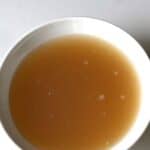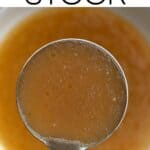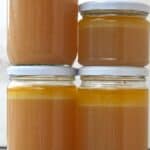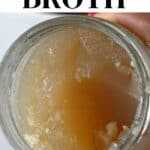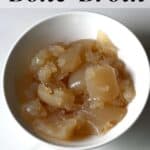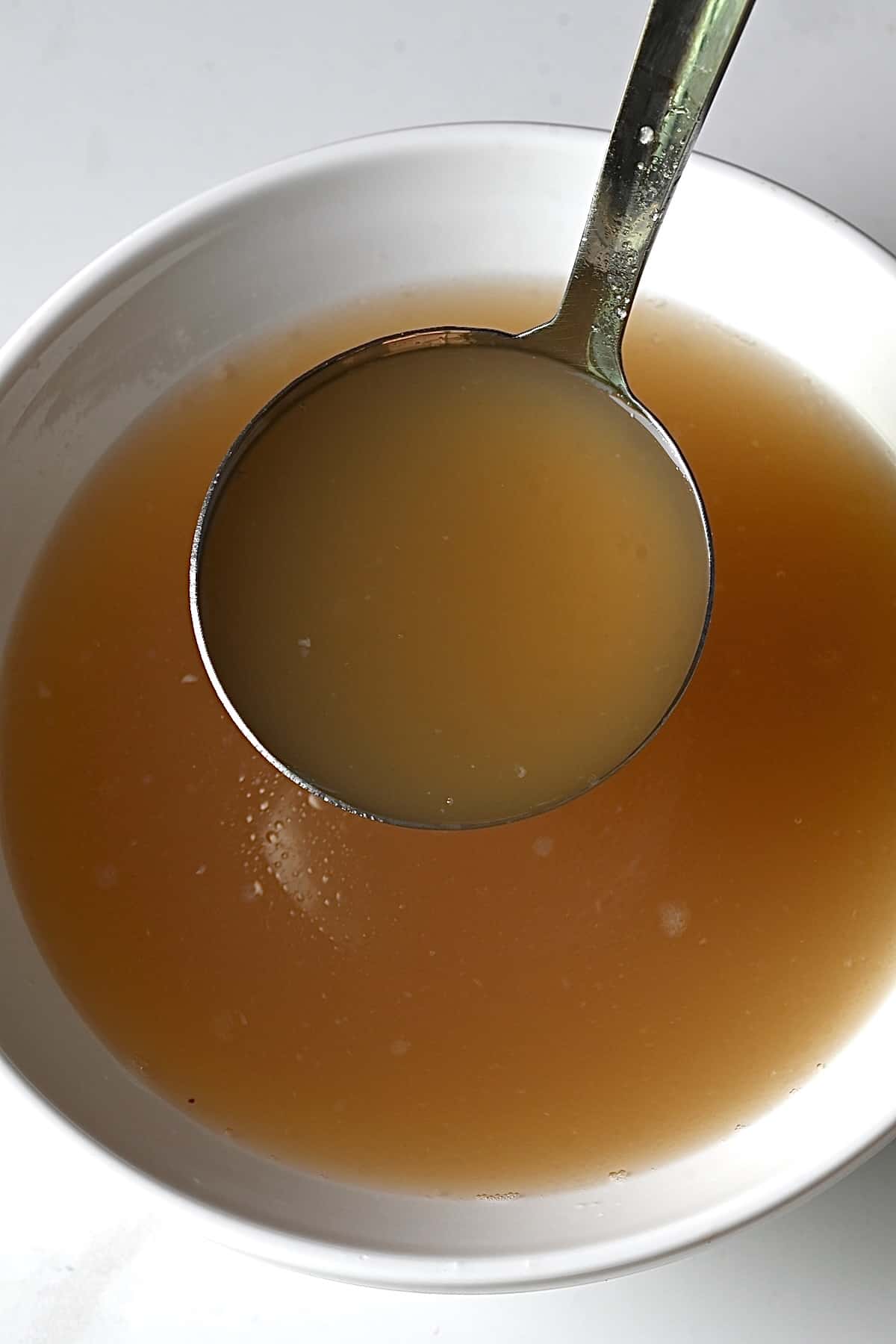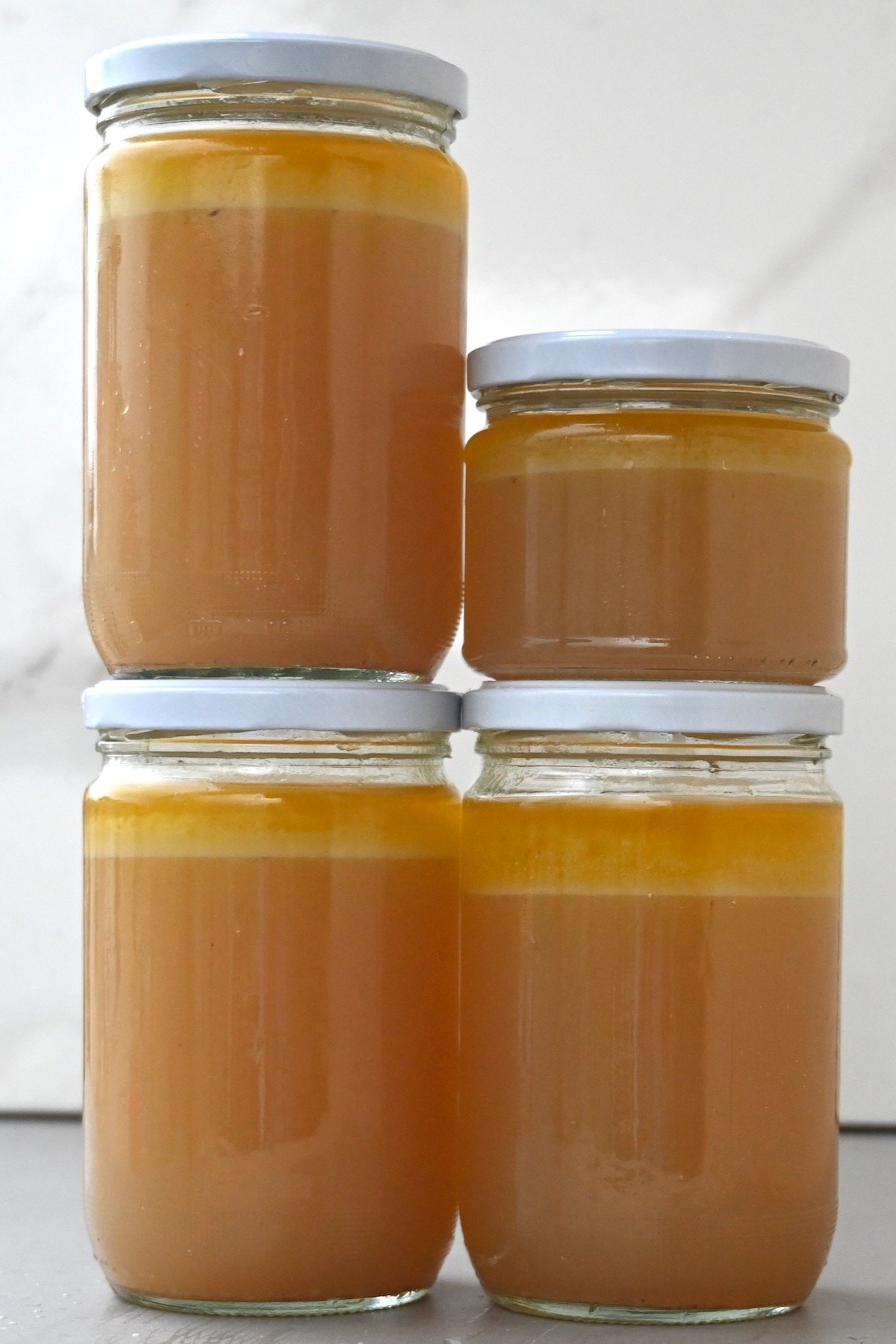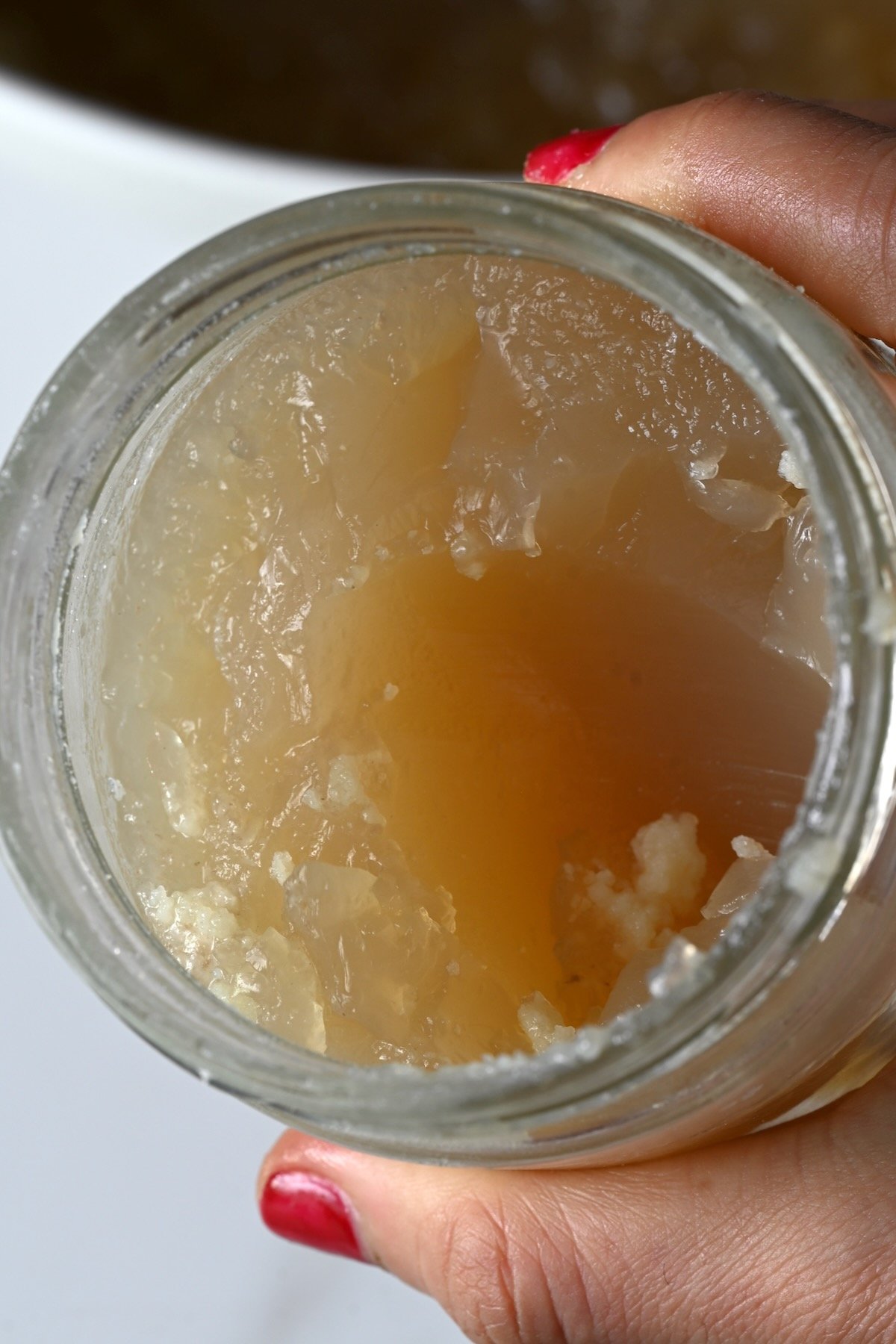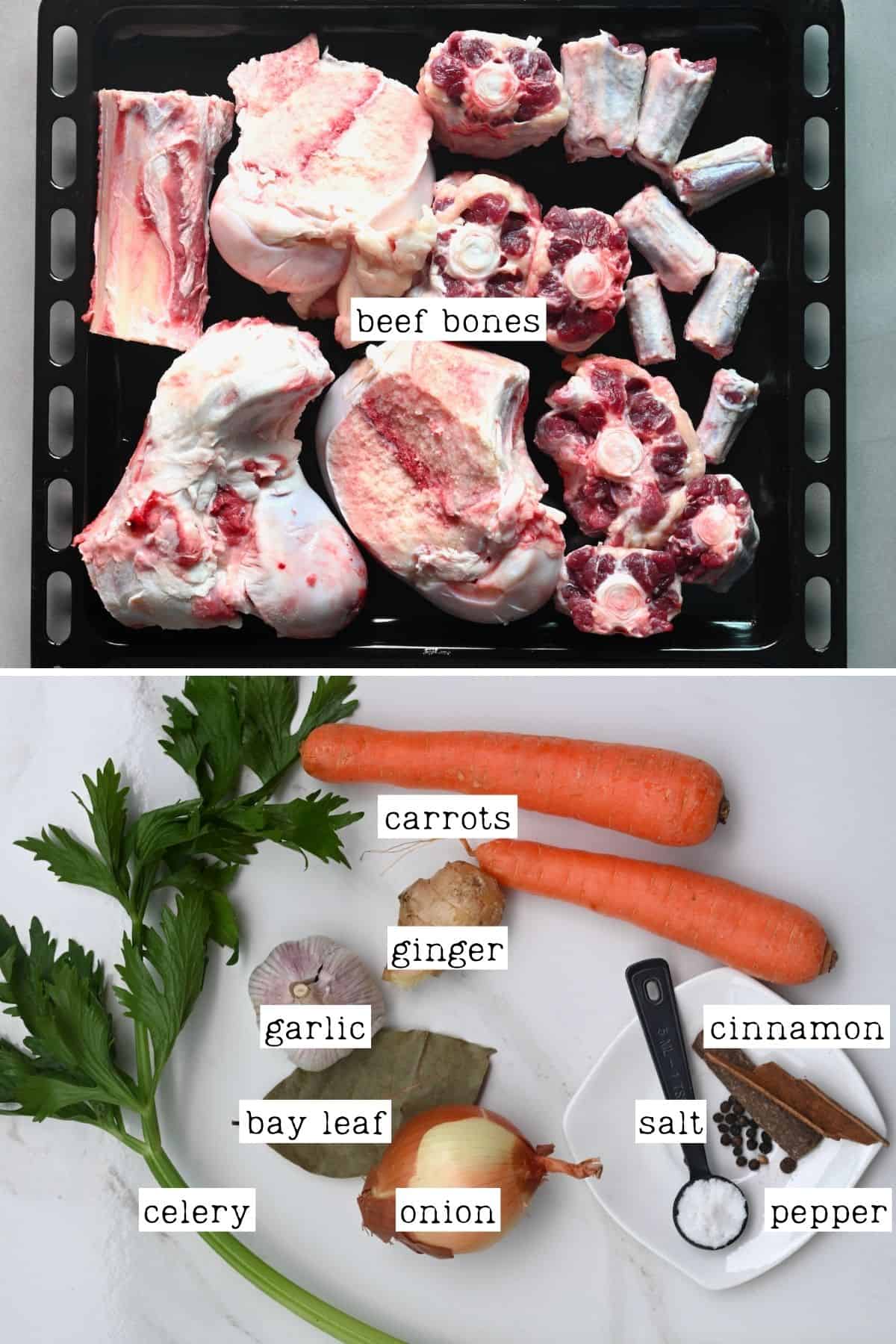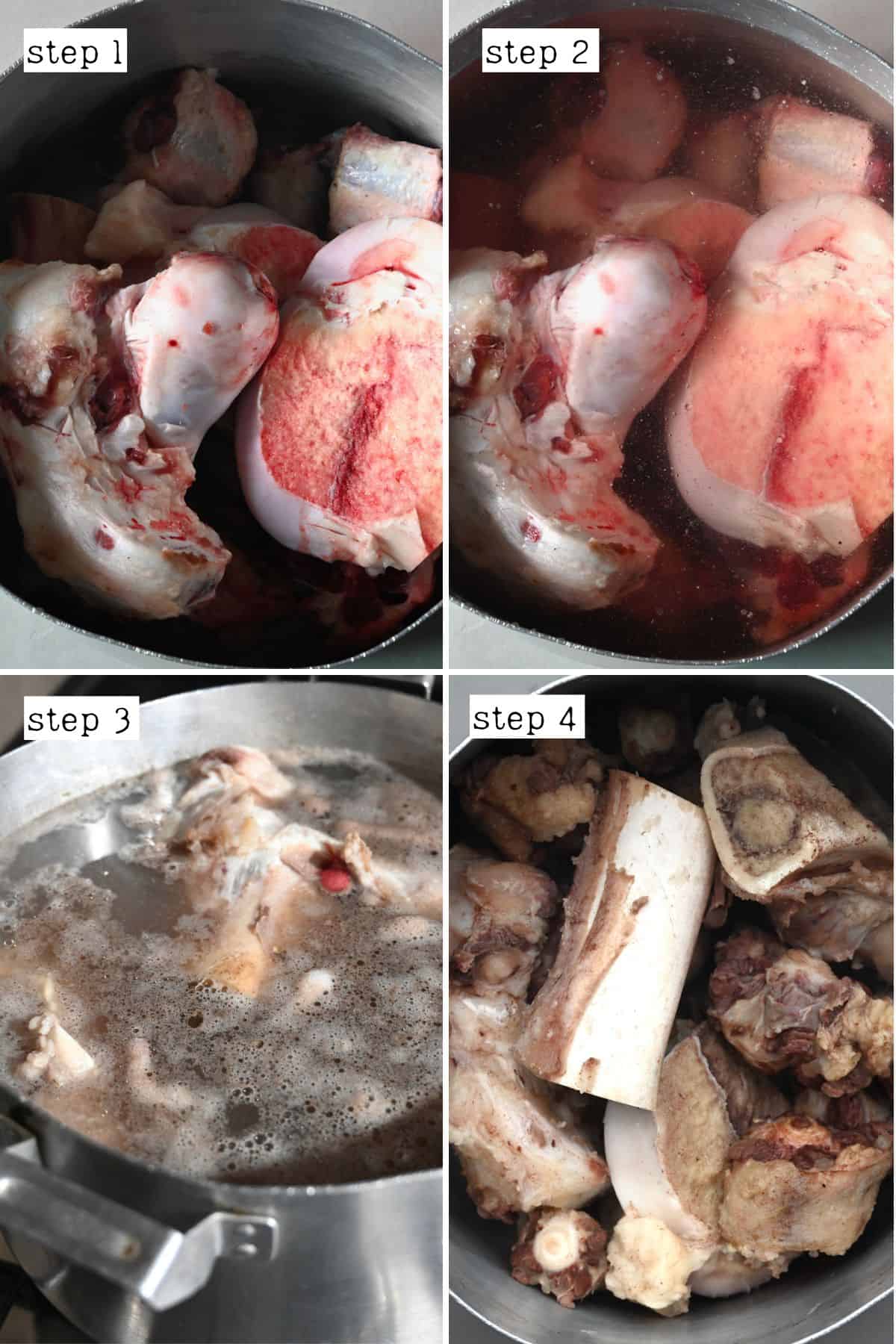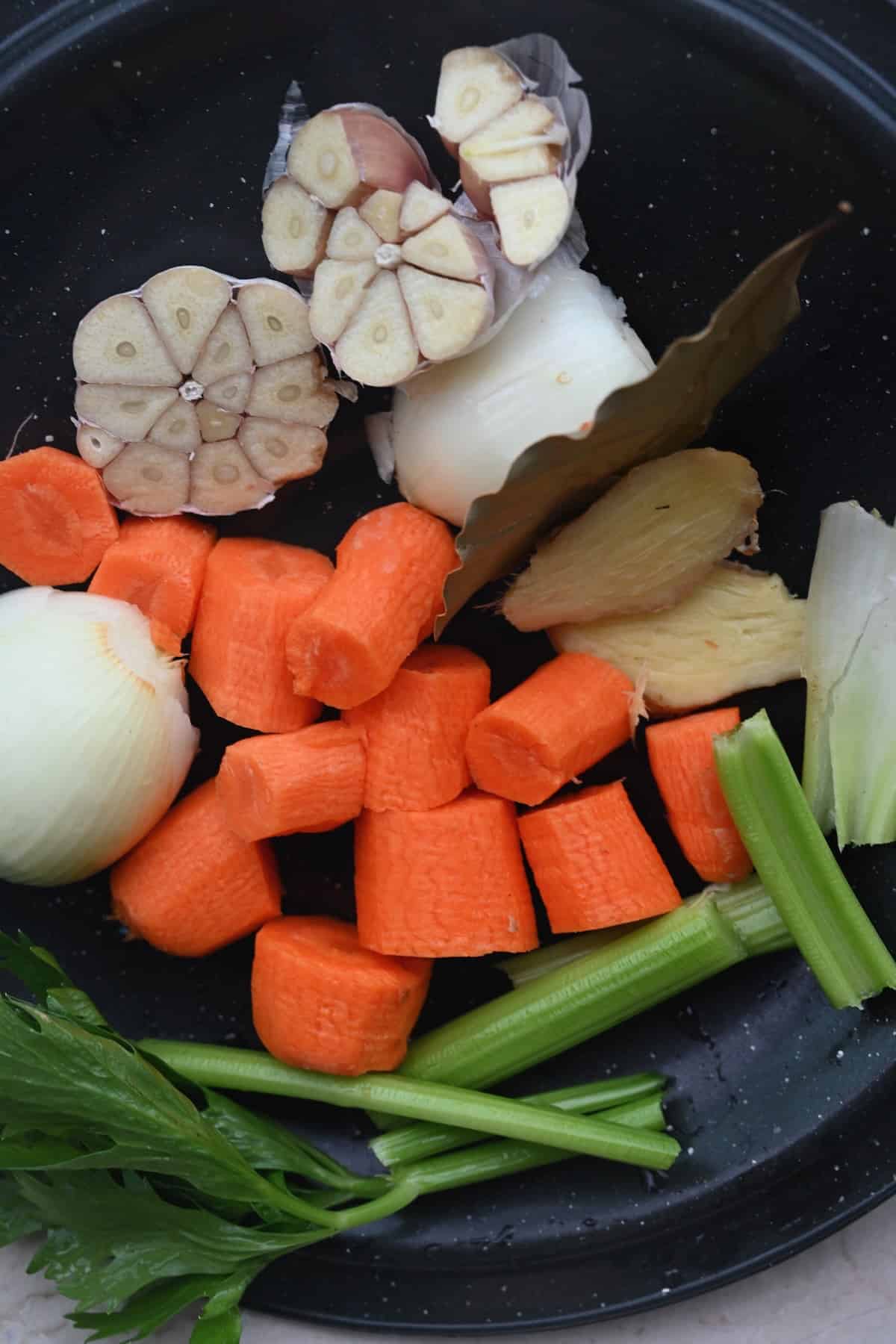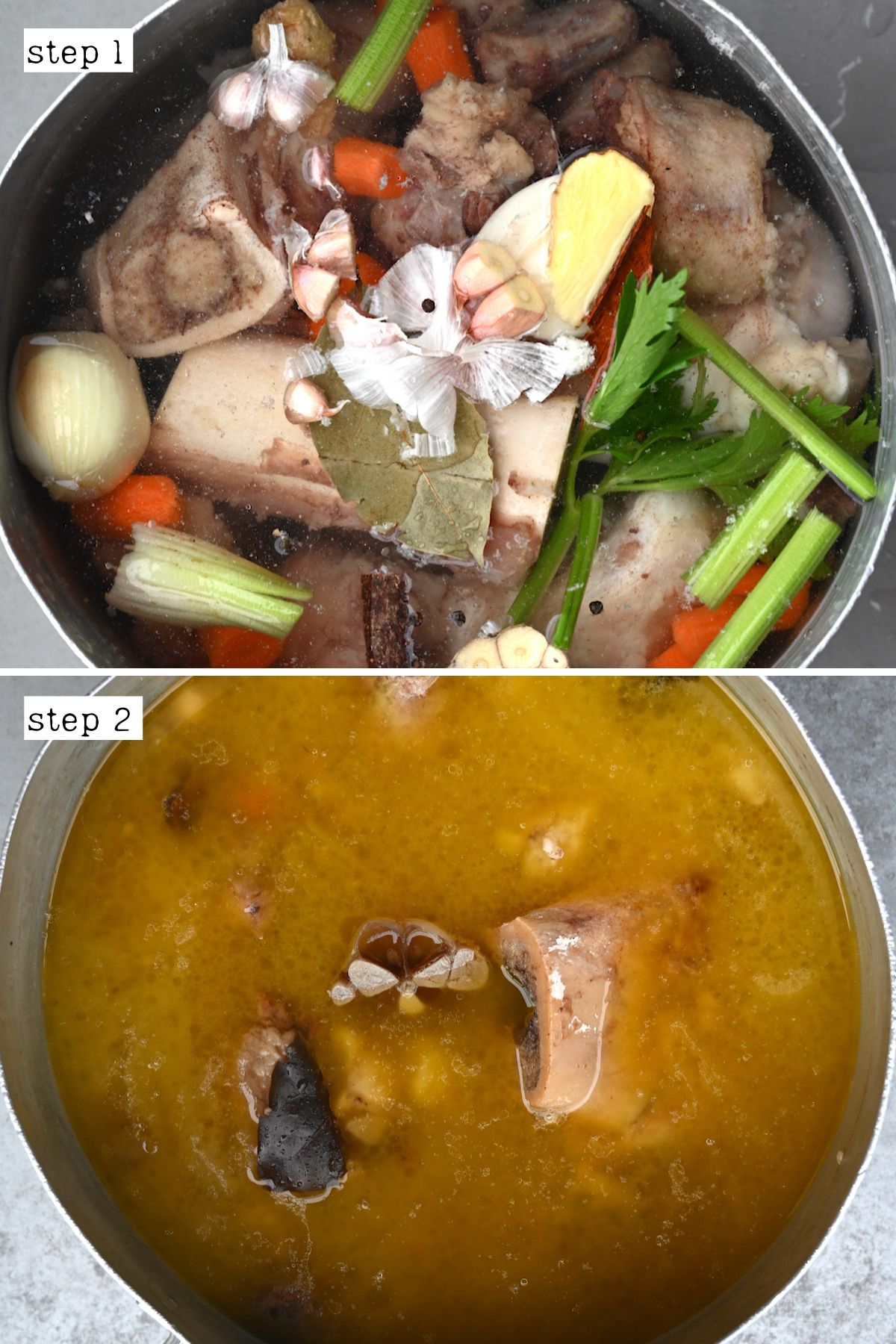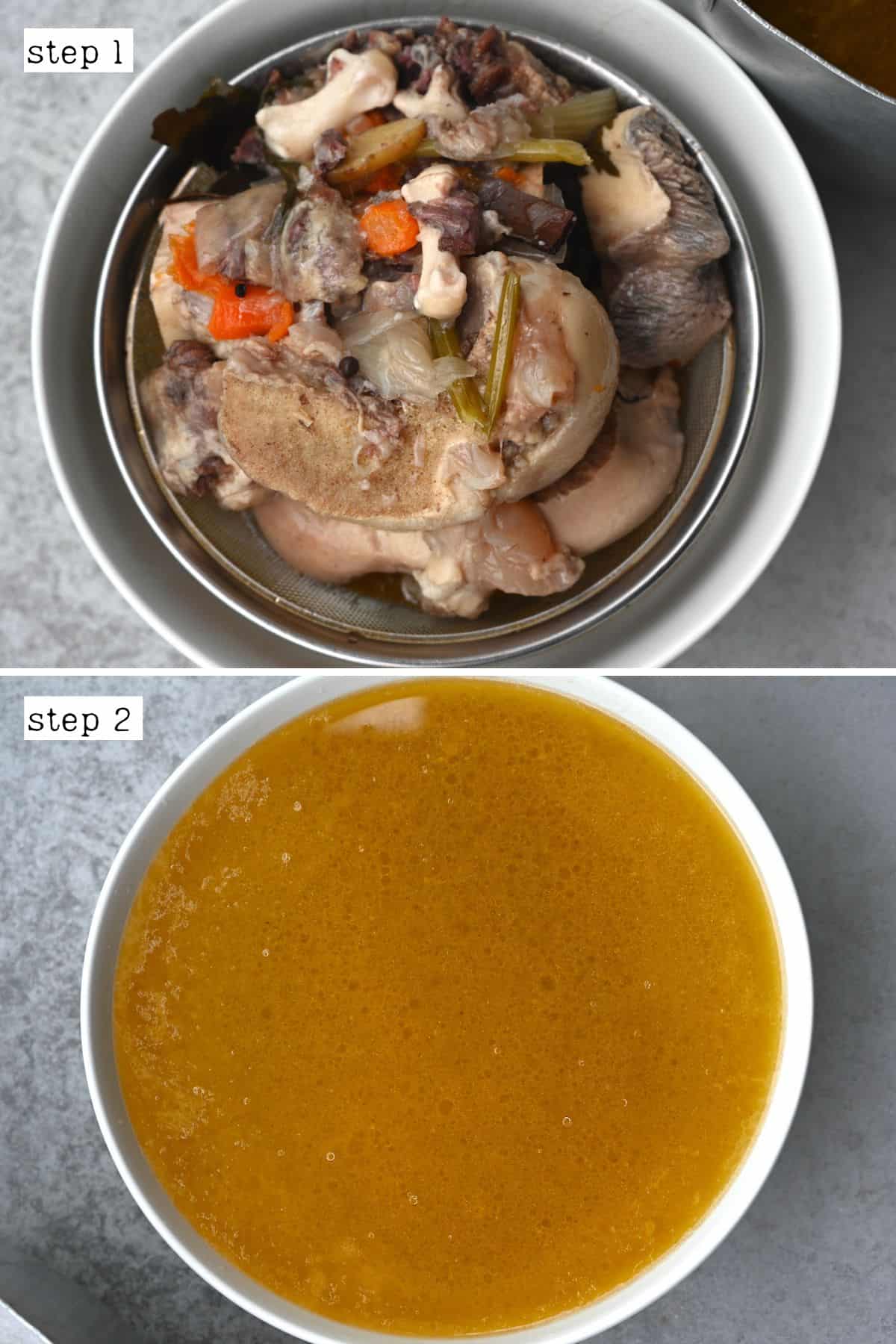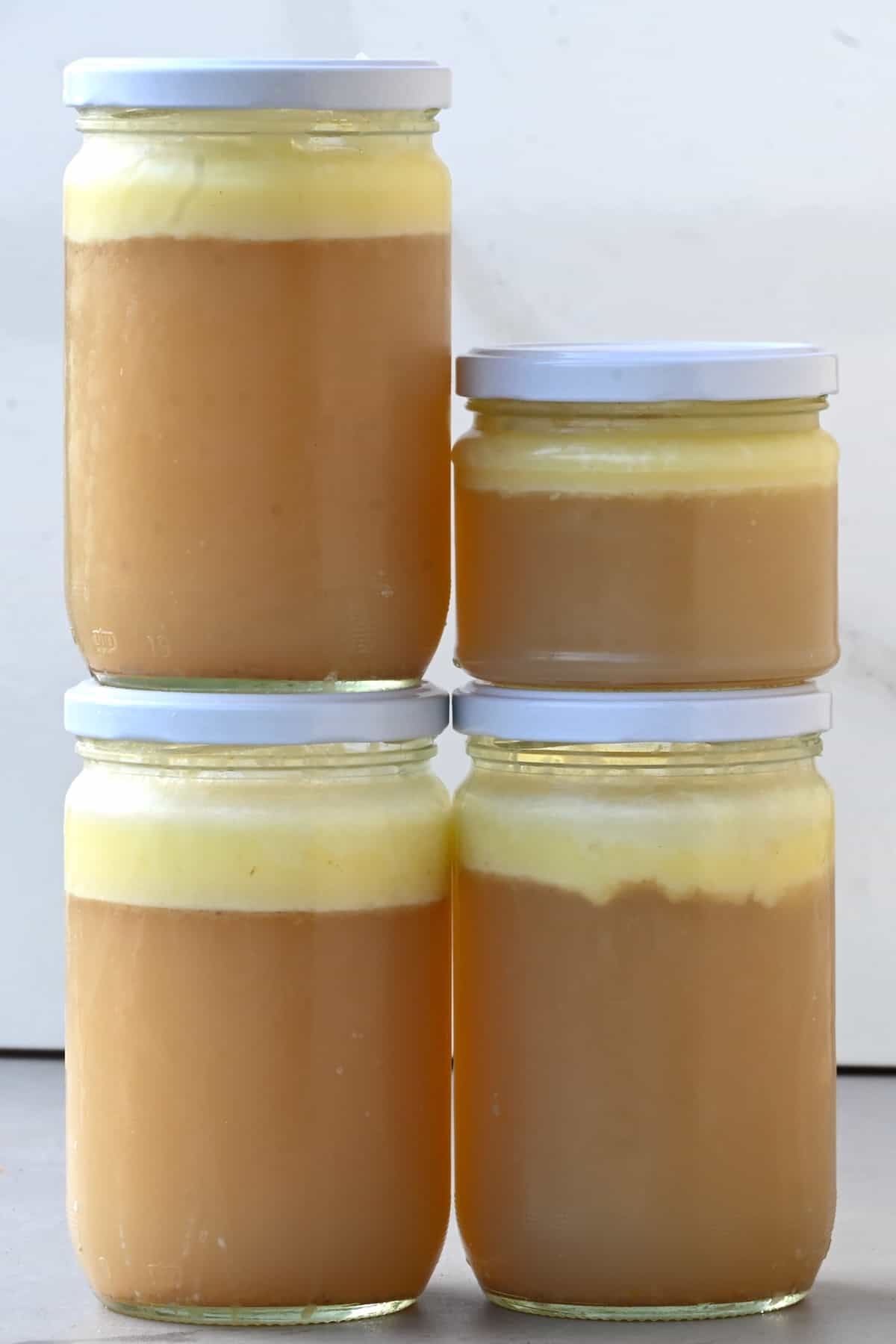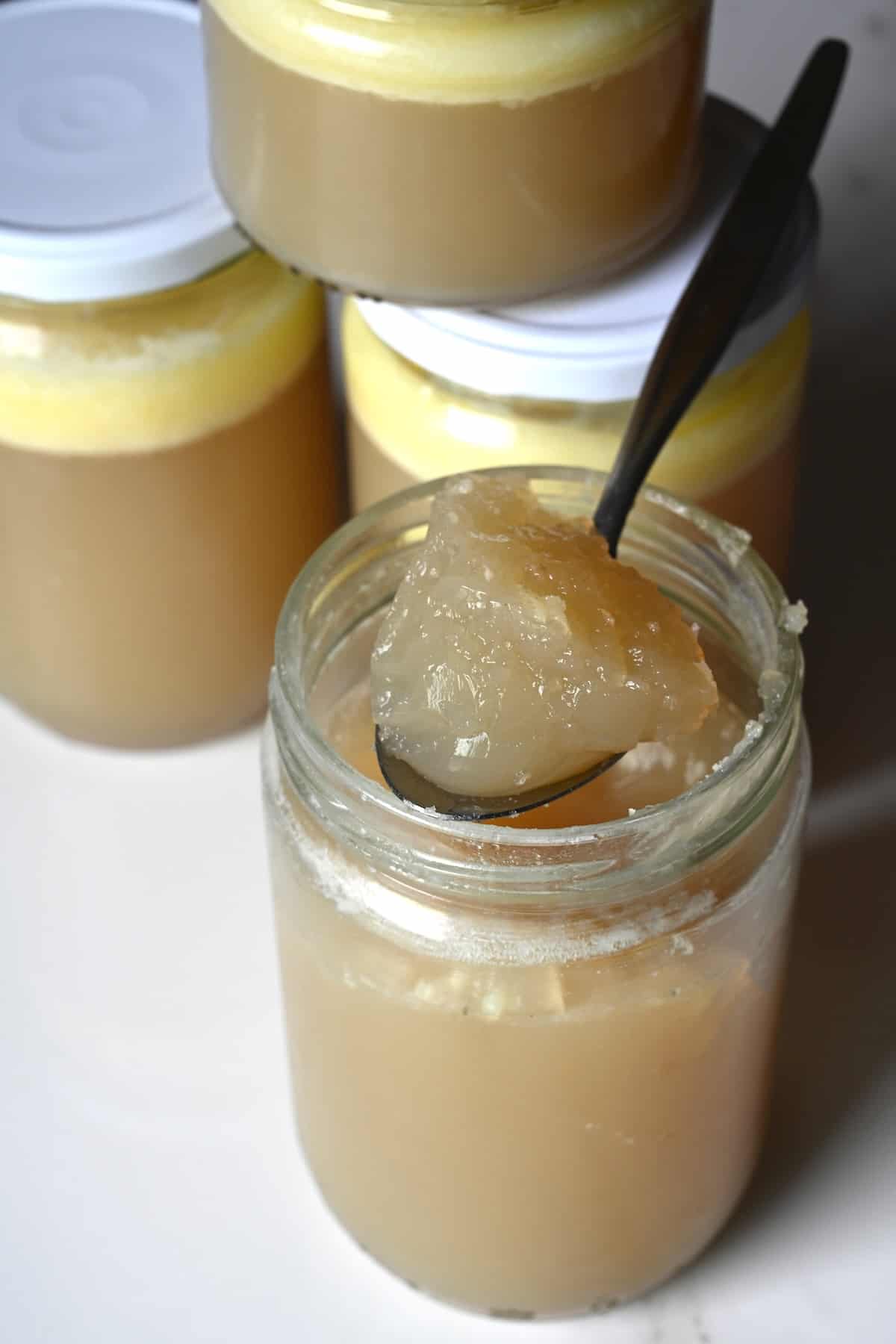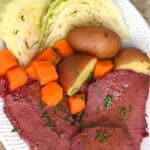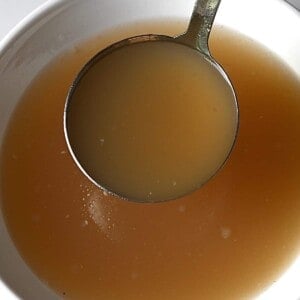From the day I first made homemade beef broth, which quickly turned into making large quantities of homemade bone broth, I haven’t looked back (or touched a store-bought version again). Not only is making beef bone broth simple (though admittedly fairly time-consuming), but the results are far superior. It’s got a richer mouthfeel and better flavor, is easy to adjust (including the sodium levels), there are no preservatives, and it’s a genuinely frugal recipe – using bones and other scraps that might otherwise go to waste. Better still, depending on your desired time and effort levels, you can prepare homemade bone broth using several cooking methods. Plus, while you can use it as a delicious cooking liquid in soups and stews, this collagen beef stock doubles up as a restorative elixir, popular to sip on and take advantage of the nutrient-dense liquid. You might also enjoy these recipes for vegetable stock, chicken broth, chicken stock, and vegetable bouillon cubes/powder!
What Is Bone Broth?
There’s a bit of confusion over several terms used to describe similar products.
Beef Bone Broth vs Beef Broth vs Beef Stock
Beef broth: Made with an emphasis on beef meat rather than bones, often with vegetables and herbs for more flavor. It’s simmered for just 1 ½-2 hours for a light, aromatic broth, perfect for cooking grains, adding to soups, or even sipping on as-is. Beef Stock: Is meatier than broth and focuses more on bones rather than meat (or a combination of both), and slow simmers for several hours. Beef bone broth: This is essentially the same thing as beef stock but simmered for even longer. It’s made with beef bones, focusing on marrow and collagen-rich bones, and connective tissue to create a super gelatinous, collagen-rich broth. The liquid is thick, silky, and packed with flavor, collagen (protein), and micronutrients. It’s also usually only lightly salted or left salt-free. Long story short: Beef bone broth and beef stock are the same, though bone broth may simmer longer.
What Does Bone Broth Taste Like?
Regular bone broths on the market (which often contain no extra veggies, herbs, or salt) can taste very lackluster/neutral and feel oily, silky, and thick on your tongue. With the addition of various aromatic and herbs, this DIY bone broth tastes more similar to a subtle beef broth but thicker.
Beef Bone Broth Benefits
Since it started becoming popular as a potential restorative elixir, I’ve been seeing the benefits of drinking beef bone broth everywhere. Using bones with meat, fat, and marrow infuses the liquid with collagen, amino acids, protein, essential fatty acids, vitamins, and minerals. So, what is bone broth good for?
Many drink bone broth for gut health, including issues with leaky gut. May aid in digestion. Healthy joints and bones. Supporting muscle tissue creation and repair. Supporting immune function. Beneficial for inflammatory diseases. Collagen may be beneficial for skin health. It may improve sleep quality.
Plus, since bone broth doesn’t contain solids, starch, or sugar, you can drink this keto stock even while fasting. Head over to Healthline to read more about the health benefits of bone broth.
Beef Bone Broth Ingredients
The best bone broth recipe requires just a few simple, inexpensive ingredients as listed here.
Beef Bones: It’s best to use a combination of grass-fed beef bones (to avoid hormones and antibiotics) and, optionally, some beef meat scraps. Read below for the best options. Vegetables: I used a typical cooking base to flavor the bone broth collagen elixir. This includes carrots, onion, and celery. I use fresh veggies for a cleaner taste, but feel free to use scraps instead or alongside them. Herbs/Spices: To add extra complex flavor levels for the best beef stock, I use: Ginger, Garlic, A bay leaf, Cinnamon (optional), Black pepper, Sea salt (optional – can add to taste or omit entirely). Vinegar: Adding a small amount of acid like apple cider vinegar, regular vinegar, or lemon juice is meant to help extract more nutrients from the beef bones. Water: You’ll need water for two steps of this beef bone broth recipe.
Best Bones for Beef Bone Broth
The best bones for bone broth are the ones that provide the most collagen and connective tissue: beef joints, knuckles, marrow bones (use sparingly to avoid overly greasy stock), neck bones, femur, etc. For more flavor, also use meaty bones: shank, oxtail, and short ribs.
How to Make Beef Bone Broth
There are several ways you can go about making homemade bone broth. The most traditional option is this stove method.
How To Blanch Beef Bones
Transfer the bones to a large, heavy-based pot/Dutch oven and cover them with water. Then bring to a boil over high heat. Simmer for 15-20 minutes, drain the liquid, and rinse the pot. Why blanch bones for beef stock? This will help remove impurities from the bones, including coagulated protein and blood, and improve the stock’s flavor and clarity. For more flavor, now roast the bones (drizzle with olive oil) on a roasting pan in the oven at 400ºF/200ºC for 40-60 minutes (optionally with the veggies), flipping halfway, until browned. Add a little water to the pan to de-glaze the brown bits, and add it to the stock pan. Meanwhile, prepare the vegetables. Peel and halve the onion and roughly chop the garlic and ginger. Roughly chop the carrot and celery into 2-inch pieces.
Simmer the Stock
In a large, heavy-bottomed stockpot, add all the ingredients for beef bone broth. Pour enough water until the bones are only just covered (I used 12 cups). Cover with a lid, then bring the mixture to a gentle boil over medium-high heat. Immediately reduce the heat to a gentle simmer, and cook for 8-12 hours. During this process, keep the lid slightly ajar and occasionally skim the foamy scum/fat from the top of the liquid. Add more water, if needed, to ensure the solids remain submerged. The time it takes to release all the nutrients from the bones will depend on your bone type. You can continue to simmer it for up to 36 hours. To use any leftover vegetable solids, remove them after a maximum of 1 ½-2 hours simmering. Finally, strain the beef stock through a fine-mesh strainer, add salt (if using), and allow it to cool slightly. Placing the bowl of bone broth in an ice bath will help to speed up the cooling and avoid bacteria growth. Then transfer the liquid to mason jars/airtight containers. Check the Recipe Card below for other cooking methods – slow cooker, instant pot, oven.
How to Store Beef Bone Broth
First up, how long does bone broth last in the fridge? When stored in airtight jars/containers, it should last 5-7 days. When chilled, it will become thick, gelatinous, and jello-like in consistency (due to all the collagen). However, it will return to a liquid state when reheated. You’ll also notice a thin, light layer on top of the homemade beef stock. This fat can be scooped away (to use as cooking fat) or left to help keep bacteria out.
Bone Broth Uses
To cook grains in place of water. Use as the base for soups and stews. Like comforting pea stew (bazella). Add to casseroles or French onion soup. Use it to make French Dip Sandwich. Use to make gravy and sauces. Replace the water when making polenta or savory oatmeal.
You can also drink it.
How To Drink Bone Broth
Many people enjoy drinking beef bone broth. It is a warm, soothing liquid. Plus it’s rich in collagen and micronutrients. However, you may wonder how to make bone broth taste better if it’s very plain. I recommend adding a little salt, a splash of something acidic like lemon juice, and some fresh herbs like parsley for a simple but delicious beef bone broth soup recipe. You could also make it creamy with a little coconut milk, add some hot sauce for spice, or make the flavor more familiar by adding some regular beef broth/beef base.
Tips and Notes
Where to get bones: You can keep a bag in the freezer to store collected bones/beef trimmings from your cooking. Local butchers and local farms you can order from may also supply low-cost or free bones. Plus, Asian and Mexican stores may stock some. Experiment: Try roasting the bones and the veggies, and use a different selection of veggies, herbs, seasonings, etc., to find your desired flavor profile. Don’t use too much water: You need just enough to cover the bones. To avoid cloudy beef stock: Ensure you boil the bones first, then ensure the simmering stock never boils, removing any scum from the surface.
More Beef Recipes
The Best Ground Beef Taco Recipe Instant Pot Corned Beef and Cabbage The Best French Dip Sandwich Homemade Corned Beef Hash Authentic Philly Cheesesteak Sandwich
If you try this healthy bone broth recipe (beef stock), let me know how it goes in the comments below. I’d appreciate a recipe card rating and would love to see your recipe recreations – tag me on Instagram @Alphafoodie!
